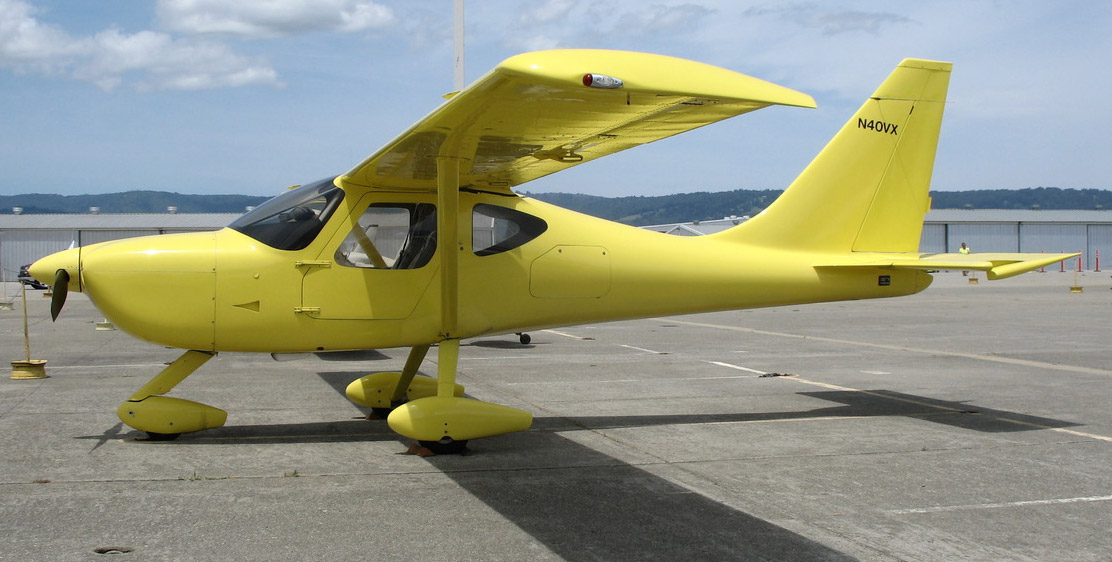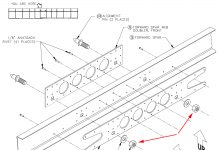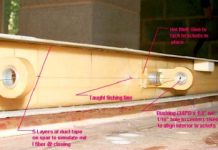
I flew with Al Sibley in his GlaStar, N40VX. We took some measurements to see how the elevator on his airplane faired with the horizontal stabilizer at various speeds. While our tests were far from comprehensive, the results may be of interest.
In brief, we found N40VX’s elevator to fair near cruise speed.
We measured the position of the stick aft of the panel at various airspeeds. On the ground, we measured the elevator positions corresponding to these stick positions by measuring the offset between the top forward end of the elevator counterweight arm and the corresponding point on the top of the horizontal stabilizer skin. The results show the elevator to fair perfectly at 140mph IAS.
| IAS (mph) | RPM | Stick Pos (in) | Elevator Pos (in) |
| 80 | 1710 | 5.9375 | 1.1875 |
| 80 with 1/2 flaps | 1710 | 5.3125 | 0.875 |
| 100 | 1920 | 4.875 | 0.3125 |
| 120 | 2200 | 4.375 | 0.25 |
| 140 | 2520 | 3.9375 | 0.0 |
| 155 | 2680 | 3.8125 | -0.125 |
N40VX is powered by a 150 hp 0-320 swinging a fixed-pitch Sensenich cruise prop. There were two of us on board (about 180 lb. each.) and about 5/8 fuel. We performed our brief test during a 20-minute flight at 1500’ MSL.
So what is the horizontal stabilizer AOI for N40VX? This wasn’t measured directly (relative to the waterline), but relative to the wing: Using a smart level across the bottom of the horizontal stabilizer forward and aft spars and the bottom forward and aft wing spars, there is a 2.20 difference in angle of incidence.
The relative AOI between wing and horizontal stabilizer was measured because that’s the angle that really matters and it’s easy to compare with other flying GlaStars. It was also used because we suspect that, despite the use of SHAI’s wing root jigs during the fuselage shell to cage fitting process, the ‘pitch attitude’ of the cage inside the shell will vary somewhat. (The jig is short relative to the whole fuselage so small cage pitch errors can become large effective waterline errors). Yet the waterline (and horizontal stabilizer AOI) are referenced to the shell and not the cage. I think the cage/shell fitting process should include checks for cage pitch (and yaw) alignment relative to the tailcone joggle (using the full fuselage length) prior to drilling cage tab attach points. Then the builder could control which constraints were relaxed to attain the final cage/shell fit and be more confident of an accurate waterline.
While the relative AOI measurement facilitates comparison with other flying GlaStars, it doesn’t help me while mounting my horizontal stabilizer because the wings aren’t on yet. What I would like is a horizontal stabilizer AOI specification measured relative to the wing mounts on the cage. I’ll assume my waterline is accurate and use SHAI’s horizontal stabilizer AOI specification.



